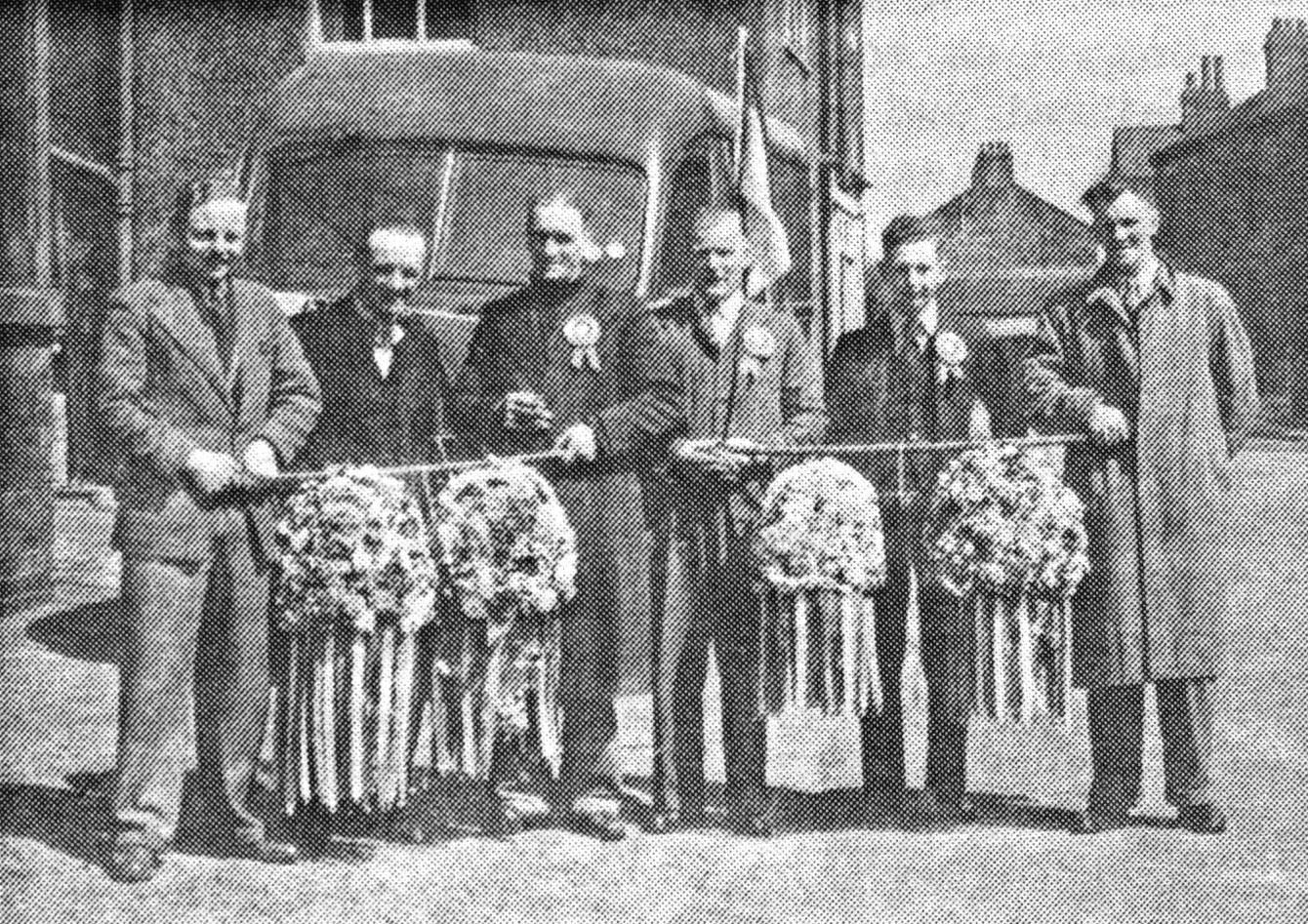 |
| Original photograph not yet available. If we can trace the original photograph we will able to display a clearer illustration. |
| The Garland Round (1951) in Scholes. Photo by Reg D.Hughes. Left to right: Tony Gilliam, Ben Strafford, Edmund Poulter, Arthur Walton, Jim Hannam, John White. |